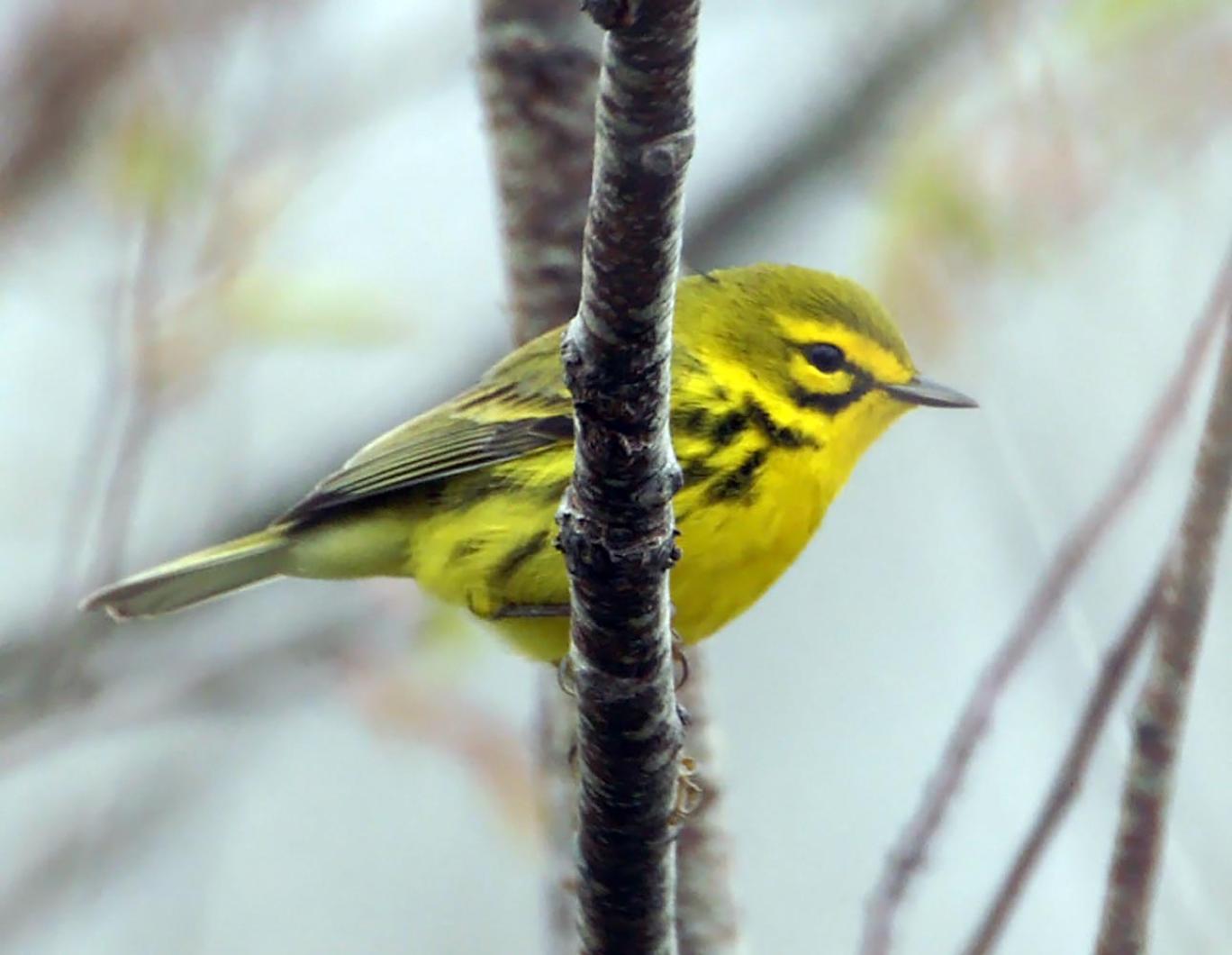Mid-April this year looks even less like spring than it usually does on the Vineyard. Although conditions were looking up a bit during the middle of this week, the last few weeks have averaged cloudy and cool. Accordingly, there appears to have been little activity among Island birders, and the migration appears to be running slightly behind schedule. But all this is poised to change.
Hard as it may be to fathom, the peak of migration has already passed for some of our earliest arrivals. Transient grackles and red-winged blackbirds have declined markedly in numbers over the last 10 days, their raucous flocks lifting from the tree-tops and heading farther north. While these species have hardly grown scarce, and migrant blackbirds will continue to pass through for weeks, a steadily higher percentage of the individuals you encounter will be contemplating summering here.
On April 4, I noted grackles carrying nesting material into an evergreen in my yard in Oak Bluffs, and whether or not this reflected a serious nesting attempt, it at least showed that reproduction is rivaling relocation as the priority for these birds. American robins, likewise, have thinned out and begun squabbling over territories and mates.
The vanguard of a new set of migratory species now is poised to arrive. Bird alert reports from Florida, Texas, and the Gulf of Mexico coast during the first half of April have tracked the accelerating arrival of many neotropical migrants — orioles, buntings, warblers, and tanagers. And a few “overshoots” of such species have already arrived at or north of our latitude (for example, a prothonotary warbler recently turned up in Wellfleet.) While the bulk of these birds won’t hit Massachusetts for several weeks yet, premature arrivals while we’re waiting are always possible, and a coastal storm or a day of strong southerly winds will almost invariably bring southern vagrants or seasonal oddities to the Vineyard. Under such conditions, the only questions are: “Which species? Where? And how many?”
Northern gannets have been scarce lately, not too surprising since the timing of their northbound migration varies considerably from year to year. But thousands were recently noted at the mouth of Delaware Bay, and within a week or two these powerful white birds will have brought their aerial show to inshore Vineyard waters.
On April 3, a drake wood duck was on Upper Duarte’s Pond in West Tisbury, and a single eastern meadowlark was on the back field at The Nature Conservancy’s Hoft Farm preserve. A tufted titmouse has been singing consistently around the Conservancy’s office (off Lambert’s Cove Road near the Wakeman Center), and a second titmouse has been singing near along State Road between Lambert’s Cove Road and the Tashmoo Overlook. While still far from abundant, this relative of the chickadee, virtually unheard of on the Vineyard as recently as a decade ago, is now established here and can be found in most parts of the Island.
On Wednesday morning, the Head of the Lagoon produced good numbers of birds, but among them were only the most expected migrants. About 20 yellow-rumped warblers and a half-dozen tree swallows took advantage of a hatch of ephemeral midges; a pair of eastern phoebes worked on a nest under the eaves of the waterworks building, while a pair of ospreys refurbished the sprawling nest that crowns the building’s smokestack. Many of the waterfowl that wintered here have left, but a female greater scaup and a female ring-necked duck were present along with about 30 buffleheads. A handful of double-crested cormorants lurked near the herring run, no doubt hoping (as I do) that the recent, alarming crash in New England river herring populations has run its course and begun to reverse.
A small flock of chipping sparrows has wintered successfully at the feeders of Heidi and Ronnee Schultz in West Tisbury. These birds are probably wintering visitors from a more northerly population and will shortly leave; “our” chippies, though, should be arriving soon, with April 20 an average date for their return to the Island. On Tuesday, arriving pine warblers were noted: three singing males and at least one female in the West Tisbury portion of the state forest. Our entire breeding population of this species typically pours in during a very short window after the vanguard turns up, so look (and listen) for this species in any part of the Island that boasts more than a couple of pitch pines.
Even as spring gains traction, birders should not neglect lingering winter birds. For instance, several large flocks of bohemian waxwings have been reported in eastern Massachusetts lately. A straggler or even a flock is not out of the question here on the Vineyard. Check any waxwings you encounter for the larger size, wing bar, and rusty undertail coverts that mark this rare visitor from the boreal forest. In any case, between lingering birds or arriving migrants, birders should keep in mind the high potential this time of the season offers. Blow off work, bird a little, and let the bird hot line at 508-627-4922 know what you’ve found.




Comments
Comment policy »